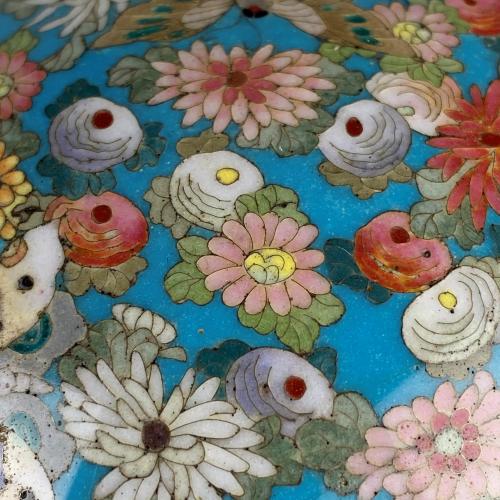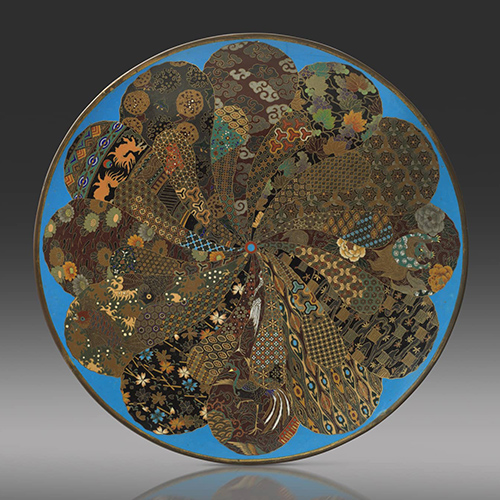

Cloisonné is a technique dating back to ancient times, where metalwork was decorated with coloured material that is held in place, or separated by, metal stripes or wire. Gold is normally used.
In recent centuries, vitreous enamel has been used, but inlays or other cut gemstones, glass or materials were also used during older periods. Cloisonné enamel very likely began as an easier imitation of cloisonné work using gems. The resulting objects themselves can also be called cloisonné.
The decoration is done by first adding compartments to the metal object by soldering silver or gold as wires or thin strips placed on their edges. These remain visible in the finished piece and separate the different compartments of enamel or inlays, which are often several different colours.
Cloisonné enamel objects are worked on with enamel powder made into a paste, which then needs to be fired in a kiln. If gemstones or coloured glass is used, the pieces need to be cut or ground into the shape of each area, or ‘cloison’.
 In antiquity, the cloisonné technique was mostly used for jewellery and smaller fittings for clothes, weapons, or similar small objects that had been decorated. In the Byzantine Empire, techniques using thinner wires were developed to allow more pictorial images to be produced, mainly used for religious images and jewellery, and by then almost always using enamel.
In antiquity, the cloisonné technique was mostly used for jewellery and smaller fittings for clothes, weapons, or similar small objects that had been decorated. In the Byzantine Empire, techniques using thinner wires were developed to allow more pictorial images to be produced, mainly used for religious images and jewellery, and by then almost always using enamel.
This was mainly used in Europe. By the 14th century this enamel technique had been replaced in Europe by champlevé, but had then spread to China where it was used for larger vessels such as bowls and vases, and the technique therefore remains common in China to the present day. Cloisonné enamel objects using the Chinese-derived styles were then produced again in the West from the 18th century onwards.

